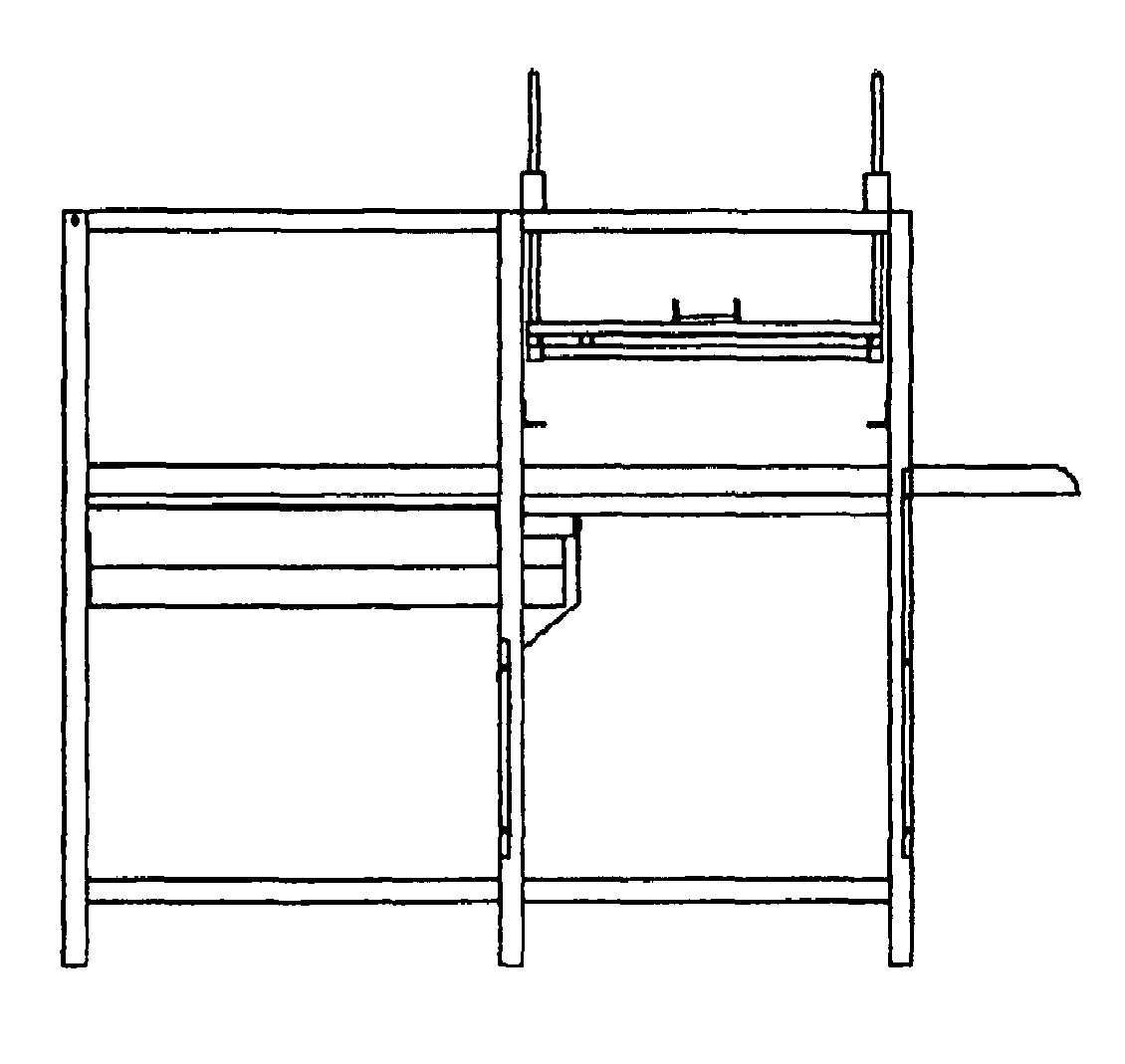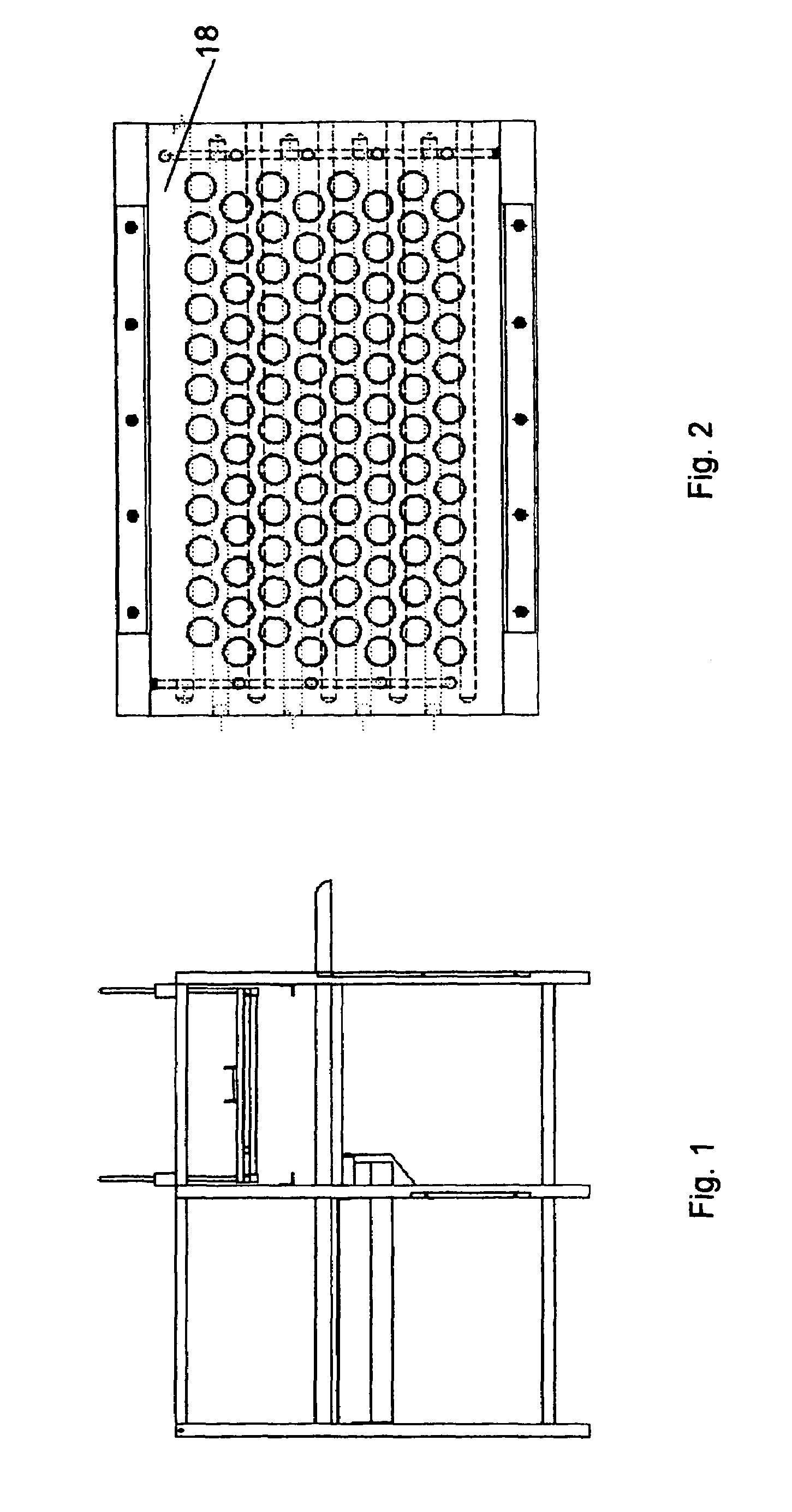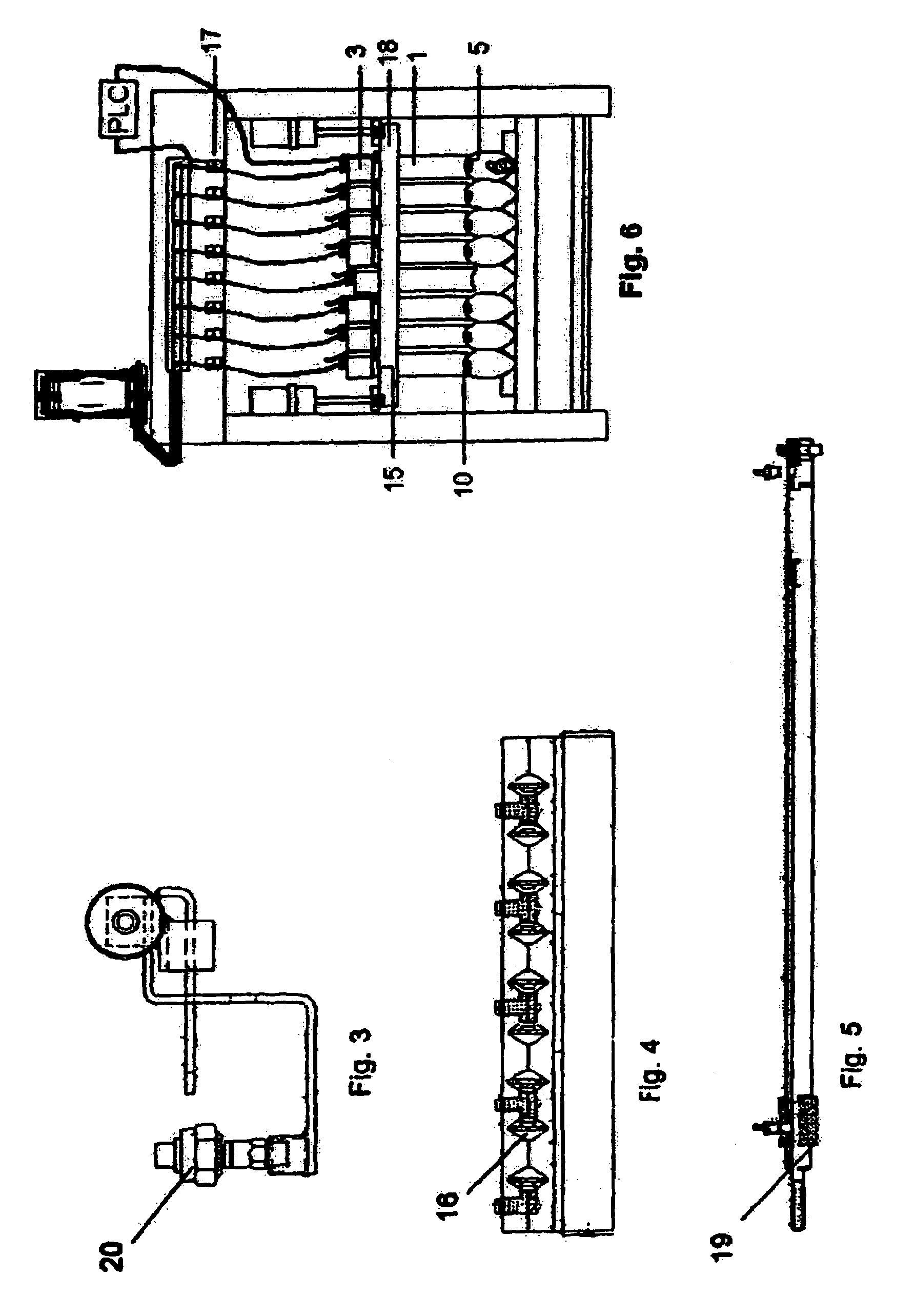Automatic egg vaccinator
a vaccinator and automatic technology, applied in the field of automatic egg vaccination system, can solve the problems of slow process, low productivity, and potential for spreading contamination from one egg to the next, and achieve the effect of rapid elimination of microorganisms, increased cross contamination chance, and maximum higenization of the vaccinator
- Summary
- Abstract
- Description
- Claims
- Application Information
AI Technical Summary
Benefits of technology
Problems solved by technology
Method used
Image
Examples
Embodiment Construction
[0040]In accordance with the illustrations above, a tray of fertile eggs is manually introduced into the vaccinator. The movement of the incubator tray through the vaccination process is controlled by three presence sensors. The first sensor detects the incubator tray entering the vaccinator and activates the tray-stop that halts the incubator tray in the correct position below the injection platform.
[0041]In this position, the second sensor is activated and a lateral brake is applied to the incubator tray to hold it in position, and the above referred tray-stop is released. The second sensor also activates the injection platform 18, shown in FIG. 2, to lower it over the eggs. A third sensor blocks the action of the first sensor until the tray leaves the vaccination area.
[0042]As injection platform 18 is lowered, the injectors are preferably positioned on top of the eggs. As seen in FIG. 7, the injectors are composed of a cylindrical body 1, and a cap 3 with an electronic contact se...
PUM
 Login to View More
Login to View More Abstract
Description
Claims
Application Information
 Login to View More
Login to View More - R&D
- Intellectual Property
- Life Sciences
- Materials
- Tech Scout
- Unparalleled Data Quality
- Higher Quality Content
- 60% Fewer Hallucinations
Browse by: Latest US Patents, China's latest patents, Technical Efficacy Thesaurus, Application Domain, Technology Topic, Popular Technical Reports.
© 2025 PatSnap. All rights reserved.Legal|Privacy policy|Modern Slavery Act Transparency Statement|Sitemap|About US| Contact US: help@patsnap.com



